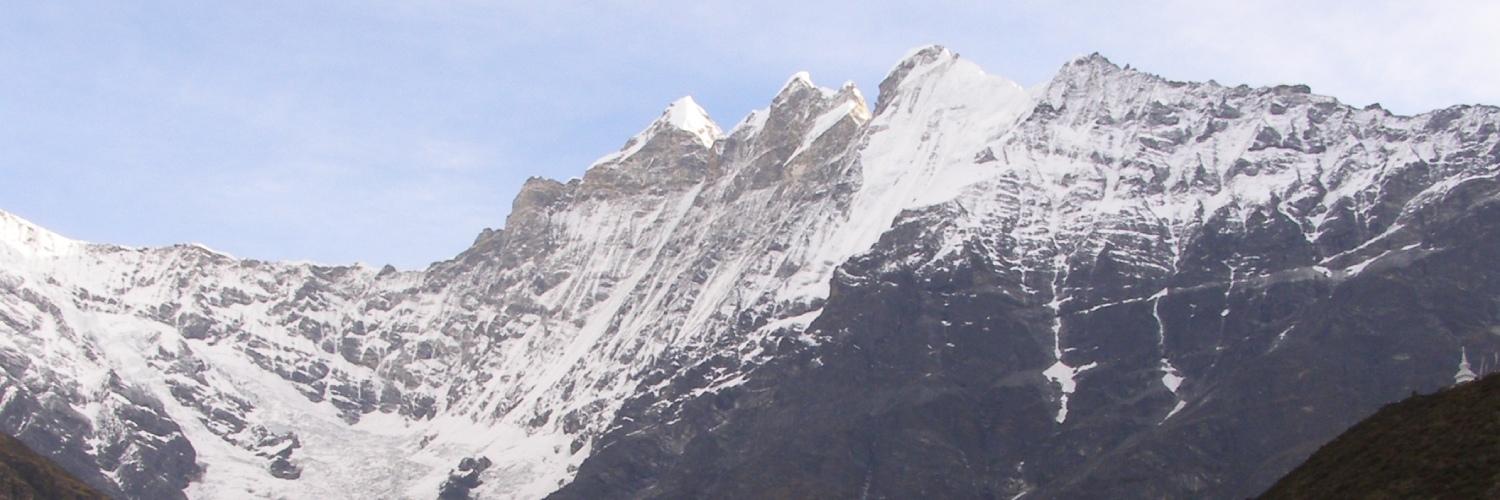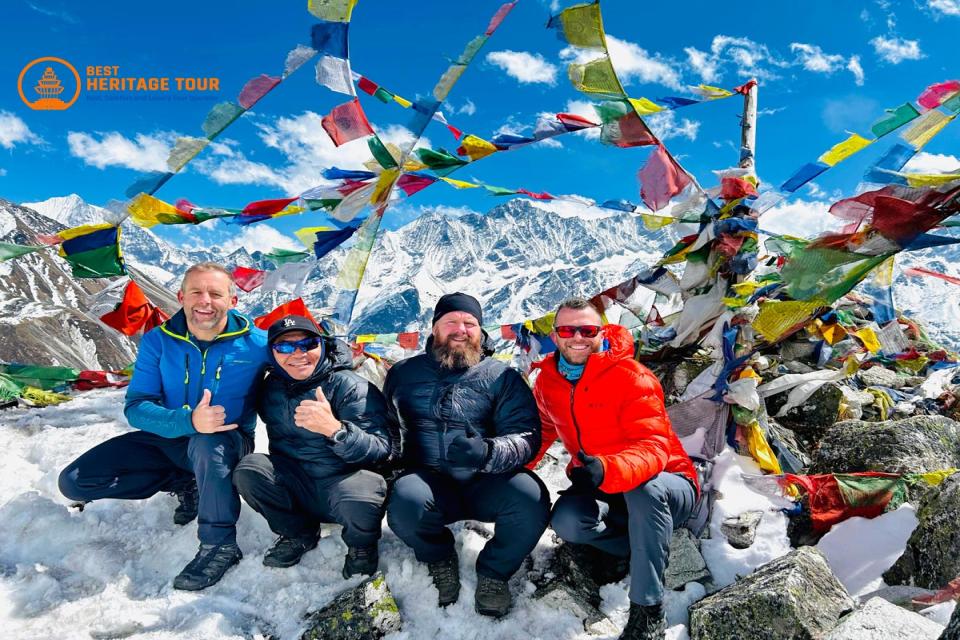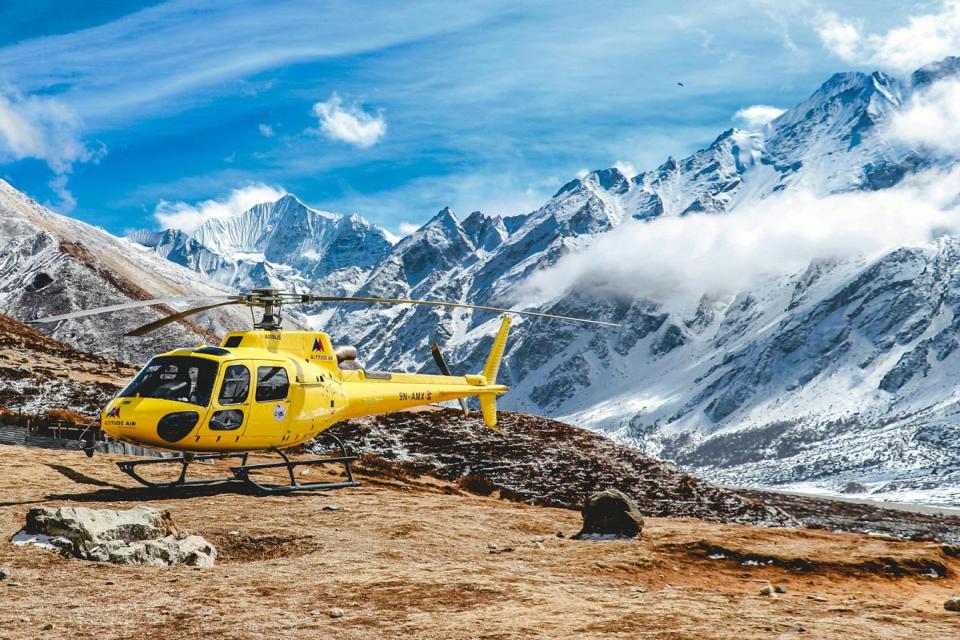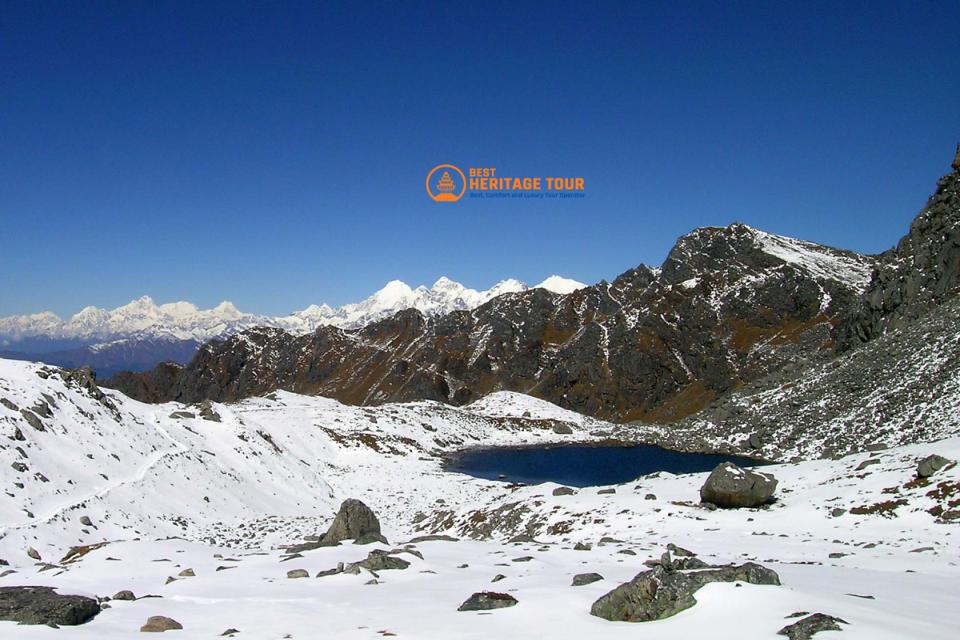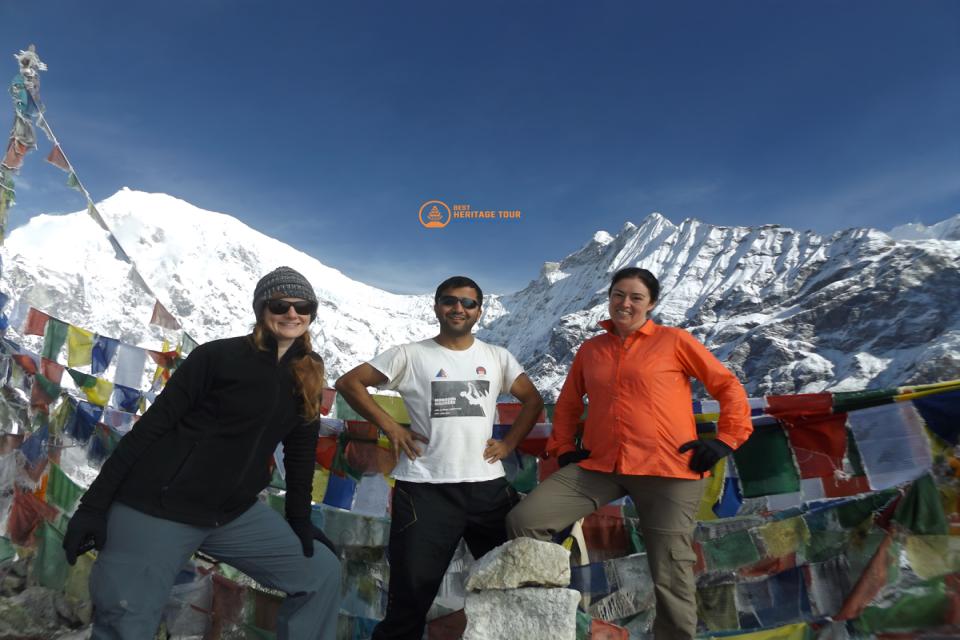Nestled just north of Kathmandu lies the stunning Langtang Valley, a trekking destination that offers breathtaking Himalayan views, rich cultural experiences, and a peaceful escape into nature. For those who don’t have weeks to spare, the Langtang Valley short trek is an ideal choice; perfect for beginners, families, or anyone looking for a rewarding adventure within a limited timeframe.
This short trek packs in spectacular mountain panoramas, vibrant rhododendron forests, and encounters with the warm Tamang people, all while being easily accessible from the capital city. In this comprehensive guide, we will walk you through everything you need to know about the Langtang Valley short trek, from itinerary and best seasons to gear, costs, and practical tips.
About Langtang Valley
Langtang Valley lies in the northern part of Nepal, forming a significant section of the Langtang National Park, Nepal’s first Himalayan national park, established in 1976. The valley is famous for its diverse flora and fauna, including red pandas, Himalayan black bears, and hundreds of bird species.
Dominated by the towering Langtang Lirung peak (7,227 meters), the valley showcases stunning alpine scenery with glaciers, waterfalls, and traditional villages nestled amidst forests of pine and rhododendron. The region is primarily inhabited by the Tamang ethnic group, known for their unique culture and Buddhist heritage, which trekkers get to experience firsthand during their journey.
Langtang Valley Short Trek Overview
While the full Langtang Valley trek can take up to 10-12 days, the short trek version typically lasts 5 to 7 days. This makes it accessible for travelers on a tighter schedule without sacrificing the beauty and essence of the region.
This short trek usually covers the route from Syabrubesi to Kyanjin Gompa and back, offering a manageable yet unforgettable Himalayan experience. Trekkers can expect panoramic mountain views, forest trails, and cultural stops along the way.
Best Time to Trek
The ideal seasons for the Langtang Valley short trek are:
-
Autumn (September to November): Clear skies, moderate temperatures, and vibrant landscapes make this the most popular trekking season.
-
Spring (March to May): Rhododendron forests burst into colorful bloom, perfect for nature lovers and photographers.
-
Winter (December to February): Cold but less crowded; snow-covered peaks add to the magic but pack warm gear.
-
Monsoon (June to August): Generally avoided due to heavy rain, slippery trails, and leeches.
Langtang Valley Short Trek Itinerary
Here’s a typical 6-day itinerary for the Langtang Valley short trek:
Day 1: Kathmandu to Syabrubesi (1,500m)
Day 2: Syabrubesi to Lama Hotel (2,350m)
Day 3: Lama Hotel to Langtang Village (3,430m)
Day 4: Langtang Village to Kyanjin Gompa (3,870m)
Day 5: Explore Kyanjin Gompa and Surroundings
Day 6: Kyanjin Gompa to Lama Hotel
Day 7: Lama Hotel to Syabrubesi and return to Kathmandu
How to Reach Langtang Valley Trek Starting Point
The trek begins in Syabrubesi, located approximately 110 kilometers northwest of Kathmandu. You have two main transport options:
-
By Jeep or Bus: Public buses leave from Kathmandu’s Gongabu Bus Park, but they can be slow and crowded. Private jeep rides are faster (5-6 hours) but more expensive.
-
Self-Drive or Taxi: Hiring a private taxi or renting a car offers more flexibility and comfort.
The road is partly paved but can be rough and bumpy in places, especially during the monsoon.
Trek Difficulty and Fitness Level
The Langtang Valley short trek is considered moderate in difficulty:
-
The trail is well-marked and mostly gradual with some steep sections between Lama Hotel and Langtang village.
-
Altitude gain is manageable, maxing out around 3,870 meters at Kyanjin Gompa.
-
Suitable for beginners with a reasonable level of fitness, as well as families and solo trekkers.
Physical preparation: A few weeks of cardio and endurance training is recommended to enjoy the trek fully and minimize fatigue.
What to Expect on the Langtang Valley Trail
The Langtang Valley Trek in Nepal is one of the country’s most rewarding Himalayan adventures. This trek offers a perfect mix of dramatic mountain scenery, unique Himalayan wildlife, and authentic cultural experiences, all within easy reach of Kathmandu. Here’s what you can expect on the trail during your Langtang Valley trek:
1. Langtang Scenic Highlights
- Enchanting rhododendron and pine forests, especially vibrant in spring and golden in late autumn
- Rushing glacial rivers, like the Langtang Khola, crossed via suspension bridges
- Stunning mountain views of the Langtang Himalayan range, including Langtang Lirung (7,227m), Gangchempo, and Dorje Lakpa
- Breathtaking sunrises and sunsets from viewpoints like Tserko Ri and Kyanjin Ri
- Diverse terrain: alpine meadows, glacial valleys, and ever-changing landscapes with altitude
2. Wildlife Encounters in Langtang National Park
- Possible sightings of the elusive red panda in bamboo and pine forests
- Himalayan langurs, commonly seen swinging through the trees near villages
- Wildlife such as barking deer, Himalayan tahrs, and occasional musk deer
- Rich birdlife including Himalayan monals, eagles, and pheasants
- Rare signs of leopards or other predators; rarely seen, but sometimes spotted near remote forest edges
3. Cultural Experience with the Tamang People
- Visit traditional Tamang villages like Langtang and Ghoda Tabela, rich in heritage
- Experience Tibetan Buddhist culture through monasteries, prayer wheels, and mani walls
- Discover sacred sites like Kyanjin Gompa, nestled among snow-covered peaks
- Witness daily Buddhist rituals, local festivals, and spiritual chants
- Enjoy genuine hospitality, including local food, yak butter tea, and cultural storytelling
4. Teahouse Accommodation on the Langtang Trail
- Basic teahouses and lodges available throughout the trekking route
- Simple rooms with wooden beds, thin mattresses, and shared toilets (squat or Western style)
- Daily hot meals: dal bhat, momos, thukpa, Tibetan bread, and porridge
- Memorable overnight stays in Langtang Village and Kyanjin Gompa for cultural immersion and local exploration
- Nights can be freezing, bring a 4-season sleeping bag, as heating is minimal
Essential Gear and Packing Tips
Langtang is cold, especially at night. Smart layering and quality gear are key. Here’s a comprehensive gear checklist:
Clothing:
- 2–3 moisture-wicking base layers
- Insulated fleece or down jacket
- Waterproof outer shell
- Thermal underwear
- Windproof trekking pants
- Beanie, sunhat, gloves
Footwear:
- Waterproof hiking boots (broken-in)
- Warm socks (3–4 pairs)
- Camp shoes/slippers
Gear:
- Backpack (40–50L) with rain cover
- Sleeping bag (rated -10°C or lower)
- Trekking poles
- Water bottle + purification tablets
- Headlamp + extra batteries
Miscellaneous:
- Sunglasses, sunscreen (SPF 30+), lip balm
- Quick-dry towel, biodegradable soap
- Power bank, portable charger
- Altitude sickness meds, first-aid kit
Permits and Regulations
Before beginning your Langtang Valley Trek, it’s essential to secure the required trekking permits. These help manage tourism sustainably and contribute to the conservation of Langtang National Park.
Required Permits:
-
TIMS Card (Trekkers’ Information Management System)
-
Required for all trekkers
-
Available from the Nepal Tourism Board (NTB) in Kathmandu or through licensed trekking agencies
-
Cost: Approx. USD $15–20
-
-
Langtang National Park Entry Permit
-
Mandatory for entering the Langtang National Park area
-
Can be obtained at the park entrance (Dhunche or Syabrubesi) or via trekking agencies
-
Cost: Approx. USD $23 (NPR 3,000 for foreigners)
-
Important Notes:
-
Always carry physical copies of your permits and keep them accessible during checkpoints.
-
Respect local customs, wildlife, and environmental guidelines to help preserve this protected area.
-
If trekking with a guide or agency, they will usually arrange permits for you.
-
For solo trekkers, ensure all documents are in order before departure from Kathmandu.
By obtaining the correct permits and following the rules, you contribute to sustainable trekking in Nepal and help conserve one of the country’s most beautiful Himalayan regions.
Costs and Budgeting for the Trek
The total cost depends on your travel style:
|
Category |
Estimated Cost (USD) |
Details |
|---|---|---|
|
Permits |
$25 – $35 |
Includes TIMS Card and Langtang National Park Entry Permit |
|
Transport |
$15 – $45 (round trip) |
Local bus or shared/chartered jeep from Kathmandu to Syabrubesi and back |
|
Accommodation |
$6 – $12 per night |
Basic teahouses and mountain lodges with twin-sharing rooms |
|
Food |
$3 – $6 per meal |
Typical meals include dal bhat, noodles, soup, momo, and Tibetan bread |
|
Guide/Porter |
$15 – $30 per day (optional) |
Licensed guide or porter for assistance, safety, and cultural insight |
Note: You can do the trek budget-friendly or opt for more comfort with guides and porters.
Health and Safety Tips for Langtang Valley Trek
Trekking in the Langtang Valley offers breathtaking scenery and rich cultural experiences, but like any high-altitude Himalayan trek, it comes with certain health and safety considerations. Proper preparation and awareness can ensure your journey remains safe and enjoyable. Here are essential health and safety tips to help you trek confidently and comfortably through Langtang Valley:
-
Altitude Sickness Awareness: Although the risk of altitude sickness on the Langtang Valley Trek is generally low, it can still occur. Monitor your health closely and allow time to acclimatize properly at higher elevations like Kyanjin Gompa.
-
Stay Hydrated and Nourished: Drink plenty of water throughout the trek and eat regular meals to maintain energy and prevent dehydration, which can worsen altitude effects.
-
Trekking Safety: Avoid taking risky shortcuts and be extra cautious on slippery or icy trail sections, especially in cooler tetemperatures. Use trekking poles for better balance on uneven terrain.
-
First Aid Essentials: Always carry a well-stocked first aid kit including altitude sickness medication (e.g., Diamox), pain relievers, bandages, antiseptics, and blister treatment to manage common trekking ailments.
Why Choose the Langtang Valley Short Trek?
If you’re looking for a rewarding Himalayan trekking experience that’s less crowded than Everest or Annapurna routes, the Langtang Valley Short Trek is an ideal choice. This trek offers a unique blend of natural beauty, cultural richness, and convenience, making it perfect for travelers with limited time who still want an authentic Nepal trekking adventure.
-
Peaceful and Less Commercialized: Enjoy serene trails away from the heavy tourist traffic found on Everest or Annapurna circuits.
-
Easy Access from Kathmandu: Located just a few hours’ drive from the capital, it’s perfect for short trips or quick Himalayan getaways.
-
Rich Cultural Immersion: Experience warm hospitality in traditional Tamang villages and explore Tibetan Buddhist monasteries.
-
Stunning Mountain Vistas: Witness spectacular views of Langtang Lirung and other Himalayan peaks within a compact, manageable itinerary.
Conclusion
The Langtang Valley short trek is a rewarding adventure packed with Himalayan beauty, culture, and tranquility, all within reach of Kathmandu. Whether you’re a first-time trekker, a family seeking a gentle Himalayan escape, or a traveler pressed for time, this trek delivers a memorable mountain experience.
Prepare well, respect the environment, and embrace the journey into one of Nepal’s most enchanting valleys. Your Langtang adventure awaits!
Ready to Trek Langtang Valley in 2025/2026? Join Best Heritage Tour for an expert-led Langtang Valley Short Trek with easy permits, reliable transport, and personalized plans. Focus on the adventure, we handle the rest!
Book now or get more info now:
- Phone/WhatsApp/Viber: +9779851149197 / +9779810043046
- Email: bestheritagetour@gmail.com / info@bestheritagetour.com
- Website: www.bestheritagetour.com
- Location: Thamel Marg, Kathmandu, Nepal
Author: Best Heritage Tour
Date: 23rd June, 2025

